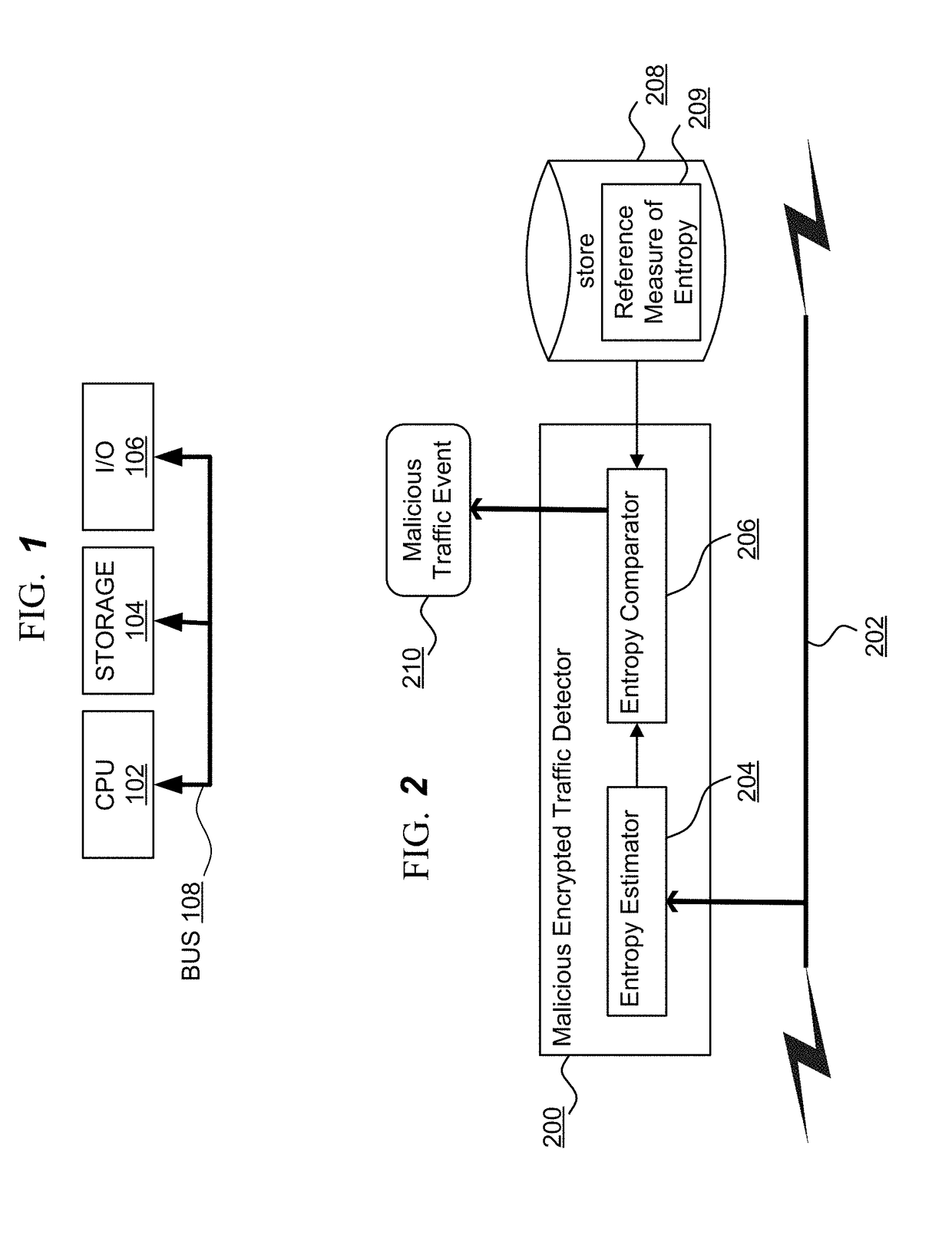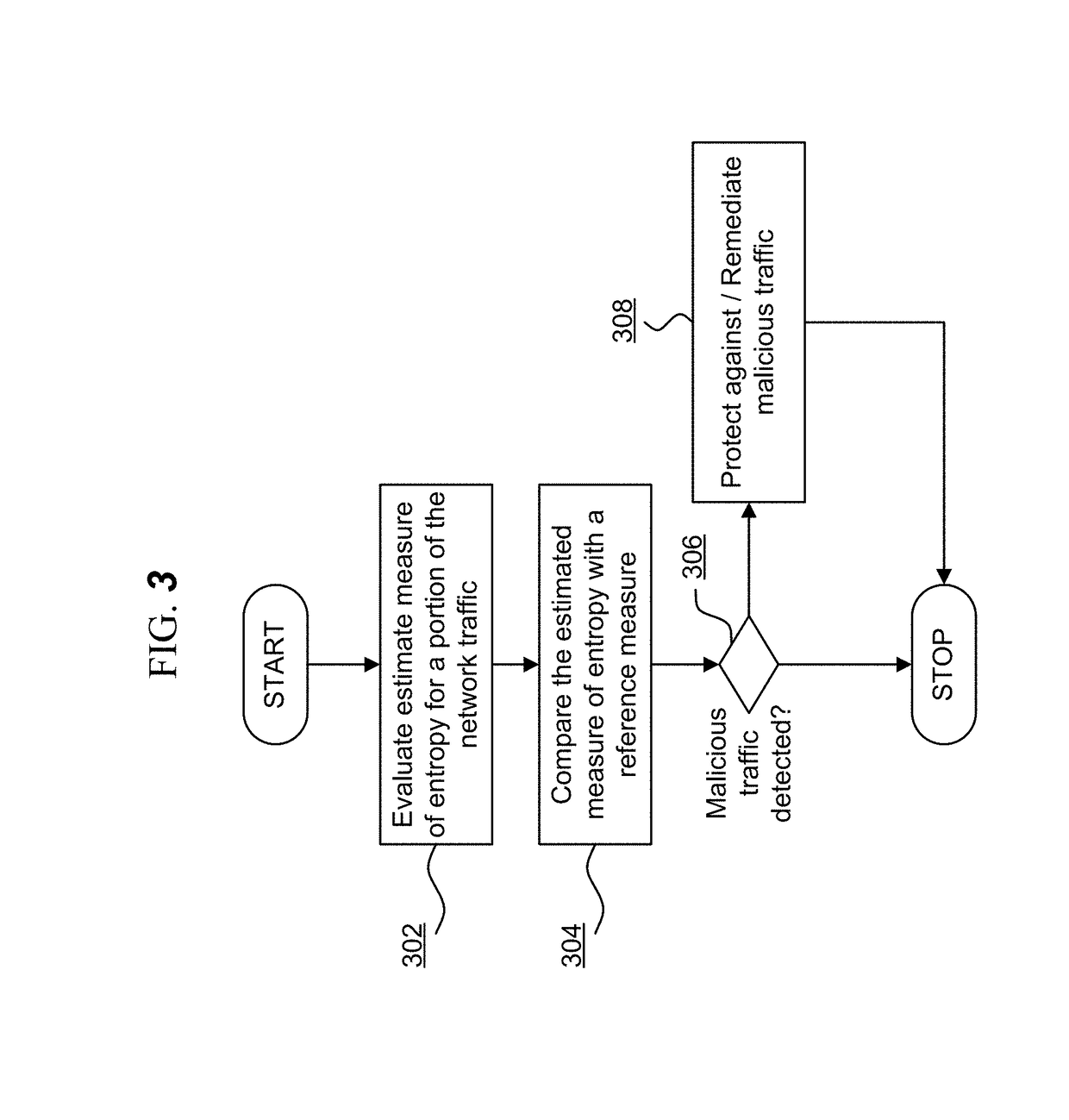Learned profiles for malicious encrypted network traffic identification
a network traffic and encrypted technology, applied in the field of malicious network communication detection, can solve the problems of affecting affecting the security of the network, etc., and achieving the effect of preventing the operation of all preventing the operation of the entire computer system, and preventing the operation of the whole or part of the computer system
- Summary
- Abstract
- Description
- Claims
- Application Information
AI Technical Summary
Benefits of technology
Problems solved by technology
Method used
Image
Examples
Embodiment Construction
[0049]FIG. 1 is a block diagram of a computer system suitable for the operation of embodiments of the present disclosure. A central processor unit (CPU) 102 is communicatively connected to a storage 104 and an input / output (I / O) interface 106 via a data bus 108. The storage 104 can be any read / write storage device such as a random access memory (RAM) or a non-volatile storage device. An example of a non-volatile storage device includes a disk or tape storage device. The I / O interface 106 is an interface to devices for the input or output of data, or for both input and output of data. Examples of I / O devices connectable to I / O interface 106 include a keyboard, a mouse, a display (such as a monitor) and a network connection.
[0050]FIG. 2 is a component diagram of a malicious encrypted traffic detector 200 in accordance with an embodiment of the present disclosure. The detector 200 is a software, hardware or firmware component for monitoring network traffic communicated via a computer n...
PUM
 Login to View More
Login to View More Abstract
Description
Claims
Application Information
 Login to View More
Login to View More - R&D
- Intellectual Property
- Life Sciences
- Materials
- Tech Scout
- Unparalleled Data Quality
- Higher Quality Content
- 60% Fewer Hallucinations
Browse by: Latest US Patents, China's latest patents, Technical Efficacy Thesaurus, Application Domain, Technology Topic, Popular Technical Reports.
© 2025 PatSnap. All rights reserved.Legal|Privacy policy|Modern Slavery Act Transparency Statement|Sitemap|About US| Contact US: help@patsnap.com



